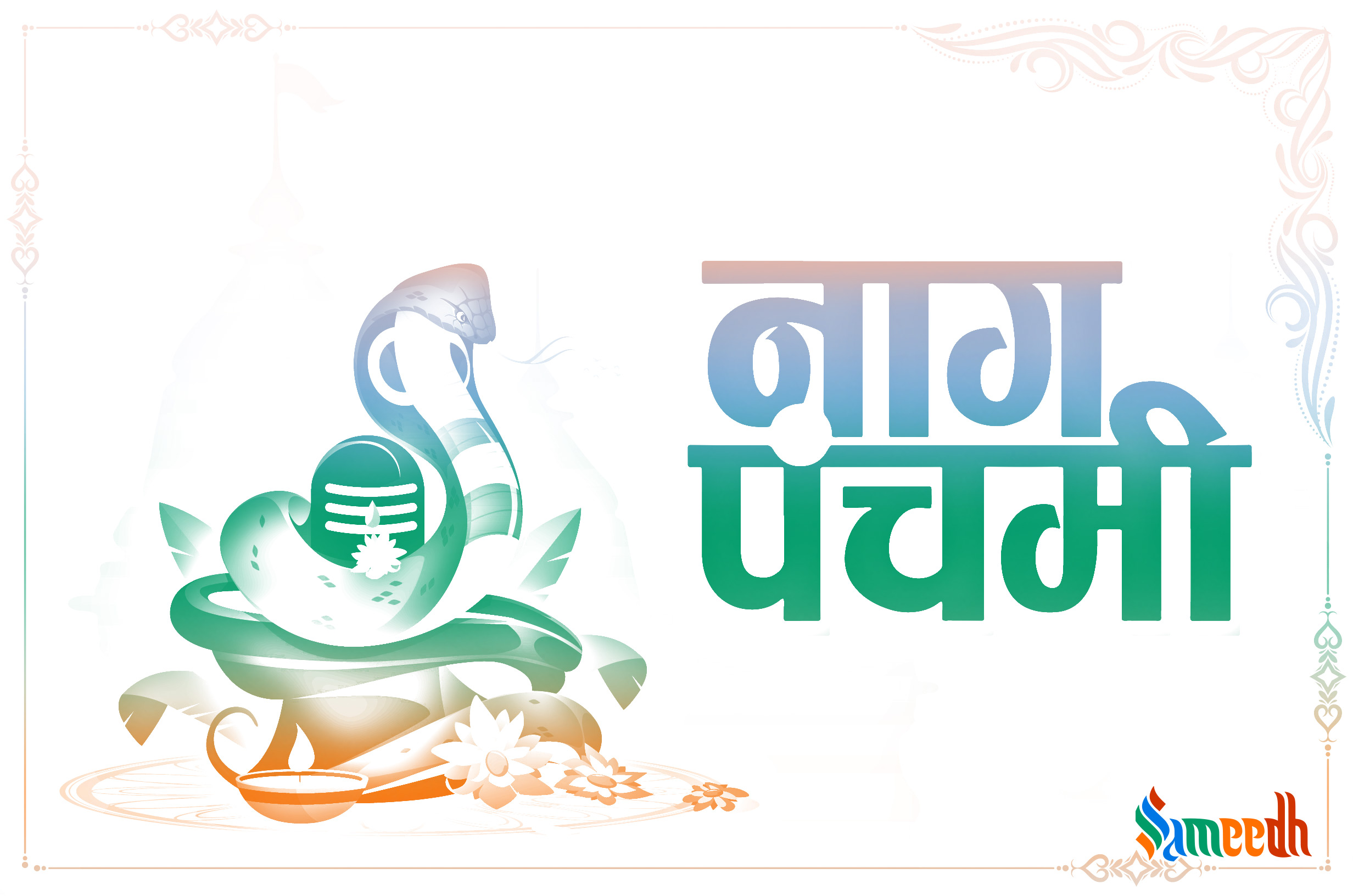Naag Panchami is a festival dedicated to worshipping snakes. It is celebrated all across India, Nepal and other parts of the world in Hindu communities.

Naag Panchami is a Hindu festival devoted to the worship of serpents. According to the Hindu traditional calendar, the Panchami Tithi (fifth day), Shukla Paksha during the month of Shraavan is considered highly auspicious for worshipping Naag Devta. Naag Panchami is celebrated two days after Hariyali Teej.
Naag Panchami rituals
A Naag or serpent god made of silver, stone, wood, or a picture of snakes is given a ceremonial bath with milk as part of the celebration, and their blessings are sought for the family’s well-being. On this day, real snakes, preferably cobras are also worshipped with milk offerings, with the help of a snake charmer. The serpent deities bathed in water and milk before being worshipped by chanting the following mantras:
नाग प्रीता भवन्ति शान्तिमाप्नोति बिअ विबोह्
सशन्ति लोक मा साध्य मोदते सस्थित समः
अनंतं वासुकीं शेषं पद्मनाभं च कंबलम्
शंखपालं धृतराष्ट्रं च तक्षकं कालियं तथा
एतानि नव नामानि नागानाम् च महात्मन:
सायंकाले पठेन्नित्यं प्रात:काले विशेषत:
तस्य विषभयं नास्ति सर्वत्र विजयी भवेत्
Meaning, ‘Let all be blessed by the snake goddess, let everyone obtain peace
Let all live peacefully without any turbulence. I reverently invoke the nine principle Naags: Ananta, Vasuki, Shesha, Padmanabha, Kambala, Shankhapala, Dhritarashtra, Takshaka and Kaliya. If prayed daily in the morning, these illustrious Naags will keep one protected from all evils and help one become victorious in life’.
King Janmejay’s revenge
The sage Astik’s mission to thwart King Janamejay’s serpent sacrifice (Sarpa Satra) is well-known in the Mahabharat epic, as it was during this sacrifice that the Mahabharat as a whole was originally told by the sage Vaisampayan. This yagna sacrifice was undertaken by Janamejay in order to annihilate the Naag race by murdering every snake on the planet in order to avenge the death of his father Parikshit at the hands of Takshak, the snake king. The sacrifice was stopped on the Shukla Paksh Panchami day in the month of Shravan, thanks to the Astik’s intervention. Since then, the day has been known as Naag Panchami.
Importance of Naag in astrology
Because of its association with Bhagwan Shiv, Devi, Vishnu, and Subramanya, Hindus have deified the cobra and worship it across the country. In Hindu astrology, snakes are associated with the Moon’s nodes. Rahu represents the head of the snake, while Ketu represents the tail. If all seven major planets are hemmed between Rahu and Ketu in the reverse order (anticlockwise) in an individual’s zodiac chart, it is said to denote Kalasarpa dosha (Black Snake Defect), which foreshadows ill-luck and hardship in an individual’s life and is thus appeased by offering snake worship on Naag Panchami.
Kutch: An abode of snakes
Naag devta is worshipped all across India in various forms and with regional rituals. But, in western part of India, particularly the Kutch region is known as an abode of snakes, and the snakes are worshipped with higher regard here, as people believe that the snake God protects them and their region. Once, at Bhujia Fort, Deshalji I, the Kutch ruler, and Sher Buland Khan, the Mughal Viceroy of Gujarat, who had invaded Kutch, fought a massive battle. When the Kutch army was about to lose the battle, a group of Naga Bawas used a brilliant trick to open the gate of Bhujia Fort and join the fight against Sher Buland Khan’s army. The battle was eventually won by Deshalji I. The Naga Bawa and their leader have taken pride of place in the Naag Panchami parade since that time.
